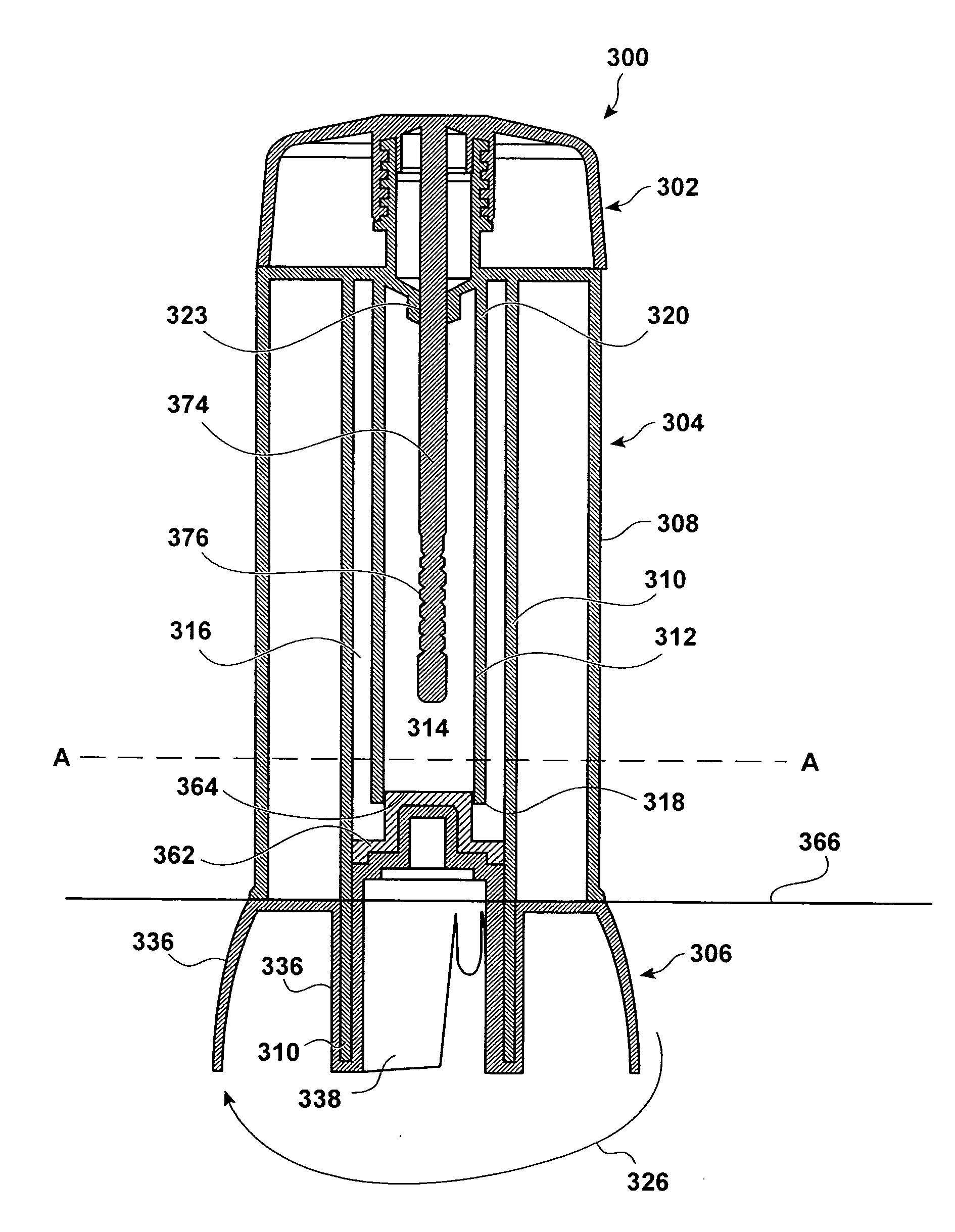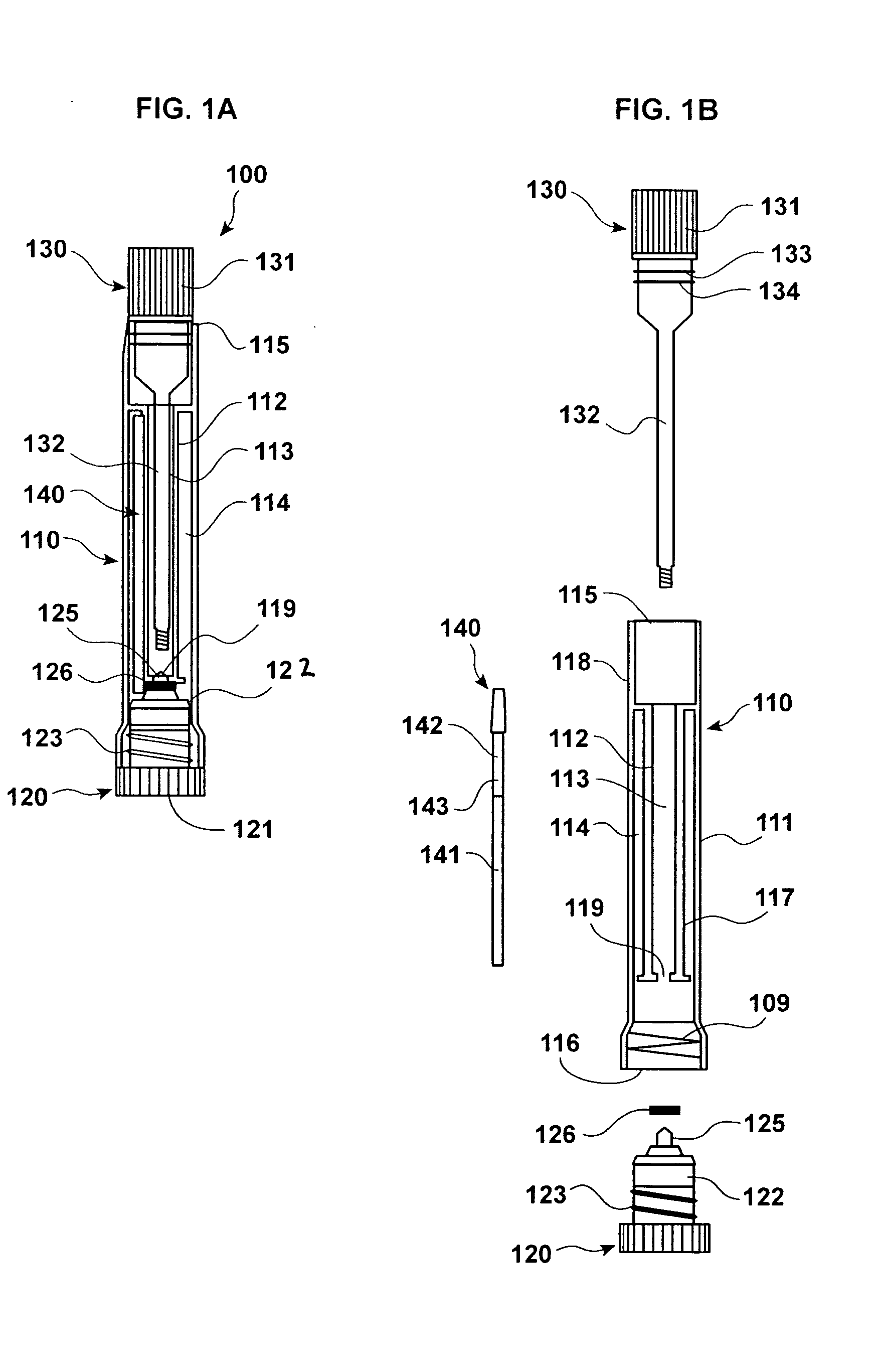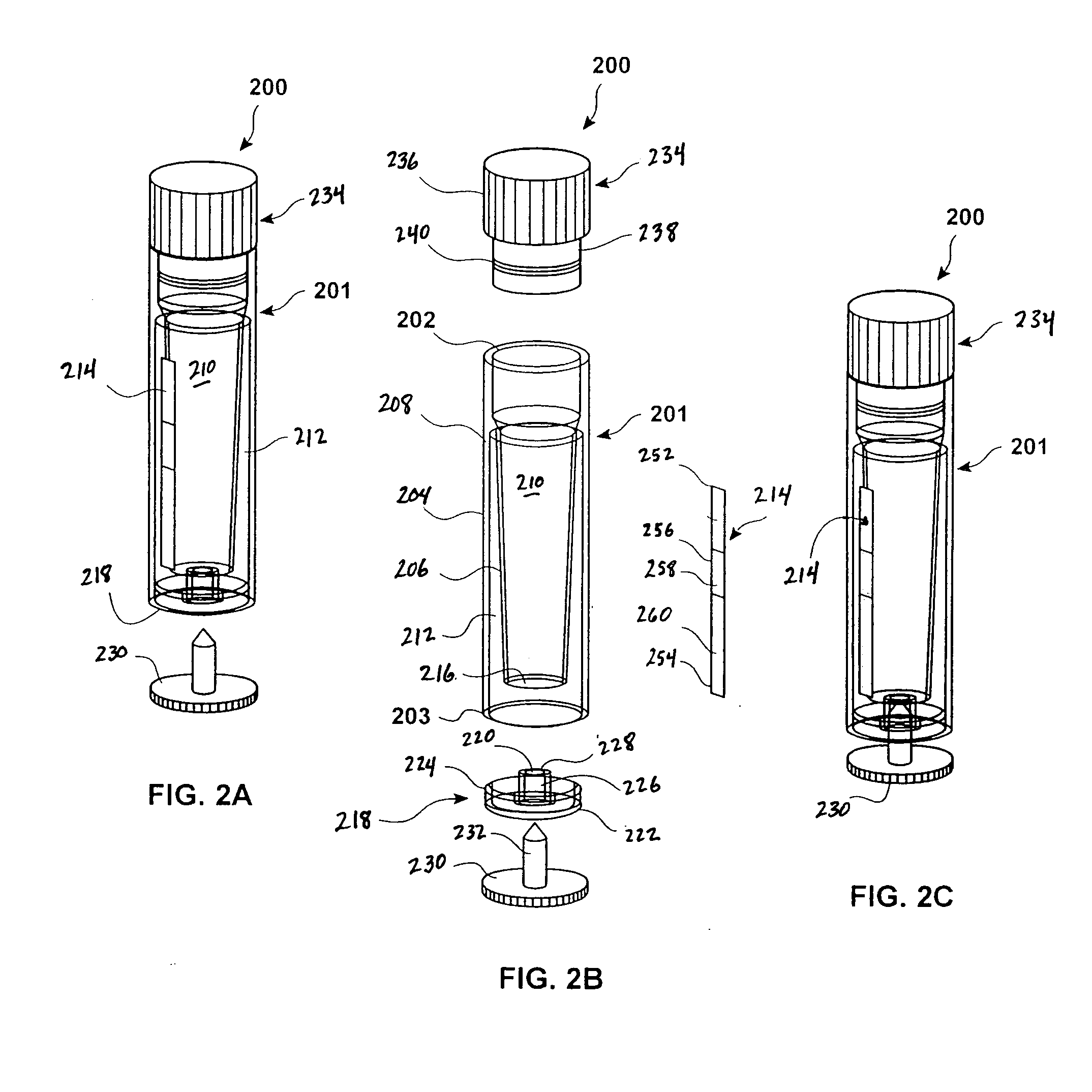Device for handling and analysis of a biological sample
a biological sample and device technology, applied in the field of apparatus for assay, can solve the problems of untrained users having difficulty with the multiple steps involved, prone to user error in conventional pre-packaged test devices and kits, and many do not readily accept solid or semi-solid samples
- Summary
- Abstract
- Description
- Claims
- Application Information
AI Technical Summary
Benefits of technology
Problems solved by technology
Method used
Image
Examples
example 1
Apparatus for Fecal Occult Blood Test
[0111]An immunochemical fecal occult blood test or iFOBT is an immunoassay based test method for detection of human blood in stool specimens. The presence of hemoglobin in feces can be indicative of gastrointestinal tract conditions associated with bleeding such as, for example, colorectal carcinoma, colon polyps, Crohn's disease, and ulcerative colitis.
[0112]An apparatus as illustrated in FIGS. 3A-3 G or 5A-B, and containing appropriate assay buffer in the sample-receiving chamber, is provided to a user. The user collects his / her feces, for example on a flushable, paper sheet secured across the seat of a toilet. The user removes the cap and the sampling wand from the rapid test apparatus, and inserts the sampling wand into the fecal sample, for example multiple times in order to obtain sample from different portions of the sample. The sampling wand (member) / cap portion is then reinserted into the test apparatus, which causes insertion of the sam...
example 2
Over-the-Counter Fecal Occult Blood Test
[0114]Alternatively to the use of a rapid test apparatus to test for the presence of blood in feces as described in Example 1, the same apparatus may be employed for in-home testing by a retail consumer. In this case, the sample acquisition is the same as described in Example 1; however, after the sample is added to the buffer and agitated, the user activates the test by twisting (if configured as illustrated in FIGS. 3A-3G) or pulling (if configured as illustrated in FIGS. 5A-5B) the base of the test apparatus. Following activation, the apparatus is set upright on a flat surface and the results of the test read, by the consumer, at the designated time. The instructions provided with the over-the-counter apparatus provide information to the consumer for reporting the results of the test to a physician.
example 3
Apparatus for Testing for One or More Illicit Drugs
[0115]The test apparatus in this example is used to detect the the presence of recreational drugs and / or drugs of abuse, for example, cannabinoids, cocaine, methamphetamine, opiates, and phencyclidines.
[0116]A urine sample is collected from a subject, and a portion of the urine sample is introduced into the sample receiving chamber of a test apparatus as shown in FIGS. 5A-5D. The cap of the apparatus is placed on the test assembly, and tightened securely. The base of the apparatus is moved downward by pulling in a downward direction on the base. Movement of the base downward opens the valve, and allows the urine sample inside of the sample receiving chamber to flow into the test chamber in which an immunoassay test strip is diposed. The apparatus is set upright on a flat surface for at least 5 minutes. The base is then moved upward into its original position to close the valve. The immunoassay test strip is visually inspected (e.g.,...
PUM
 Login to View More
Login to View More Abstract
Description
Claims
Application Information
 Login to View More
Login to View More - R&D
- Intellectual Property
- Life Sciences
- Materials
- Tech Scout
- Unparalleled Data Quality
- Higher Quality Content
- 60% Fewer Hallucinations
Browse by: Latest US Patents, China's latest patents, Technical Efficacy Thesaurus, Application Domain, Technology Topic, Popular Technical Reports.
© 2025 PatSnap. All rights reserved.Legal|Privacy policy|Modern Slavery Act Transparency Statement|Sitemap|About US| Contact US: help@patsnap.com



